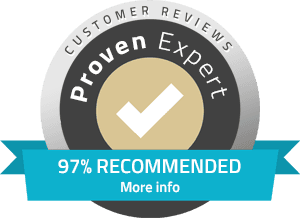Also known as SEO, it is a broad discipline which is in constant development and updating but some basic ways make sure a site is well presented to search engines. Please take note that the best practices in SEO change over time so do not forget to renew yourself with the latest trends and changes in algorithms. This response is based on my last known update from September 2021. A couple of the best-known techniques include:
Keyword Research: Find out what your target audience is looking for. Use Google Keyword Planner, SEMrush, or Ahrefs to determine the relevant keywords that have a high search volume.
On-page SEO
Optimize Title Tags: Come up with attractive and descriptive title tags for every page that include your target keywords.
Meta Descriptions: Write compelling meta descriptions that encourage clicks and include relevant keywords.
Header Tags: Use header tags (H1, H2, H3, etc.) to structure your content and incorporate the keywords appropriately.
Content Optimization: Develop content that is valuable, informative, and engaging to people. Keep the keywords organically placed in the body content.
Internal Linking: This is linking to other relevant pages within your website to improve navigation and distribute link equity.
Mobile Optimization: Ensure that your site is mobile-friendly because Google favors mobile-responsive websites. A mobile-first index from Google essentially means that their ranking and crawling process will give primary preference to your site’s mobile version.
Page Speed Optimization: Fast pages are crucial for both user experience and SEO.Compress images, enable browser caching, and use Content Delivery Networks (CDNs) to improve page speed.
Backlink Acquisition: Secure top-tier backlinks from reputable websites within your industry. This can be done through guest posting, outreach, content marketing, and more.
Technical SEO:
XML Sitemap Creation: Develop an XML sitemap to aid search engines in comprehending your website’s architecture.
Robots.txt: Use a robots.txt file to guide search engine crawlers on what parts of your site to index.
Schema Markup Integration: Apply schema markup to boost the visibility of your content in search results.
Local SEO Relevance: For all businesses, although most especially those with a local presence, it is very significant to optimize the local search for each business. Complete and keep accurate your Google My Business listing and invite reviews from customers.
User Experience (UX): A positive user experience can indirectly impact SEO by reducing bounce rates and increasing time on site. Ensure your website is user-friendly and visually attractive.
SSL Security: An SSL certificate will make your website secure by protecting data, thereby giving slight SEO advantage.
Regular Content Updates: Keep updating and refreshing your website with new content. Fresh content can help maintain and improve search rankings.
Monitor and Analyze: Use tools like Google Analytics and Google Search Console to monitor your site’s performance. Analyze your traffic, rankings, and user behavior to make data-driven improvements.
Voice Search Optimization: As voice search becomes more prevalent, adapt your content to answer natural language queries that users might speak to voice assistants like Siri or Alexa.
Social Signals: While the direct impact of social signals on SEO is debated, maintaining an active social media presence can indirectly improve your website’s visibility and brand reputation.
Our Services
SEO Service in Ranipet | Logo Design Service in Ranipet | Digital Marketing Training in Ranipet | Graphic Deign Service in Ranipet | Digital Marketing service in Ranipet | Website Development Service in Ranipet | SEO Service in Vellore | Logo Design Service in Vellore | Digital Marketing Training in Vellore | Graphic Deign Service in Vellore | Digital Marketing service in Vellore | Website Development Service in Vellore



